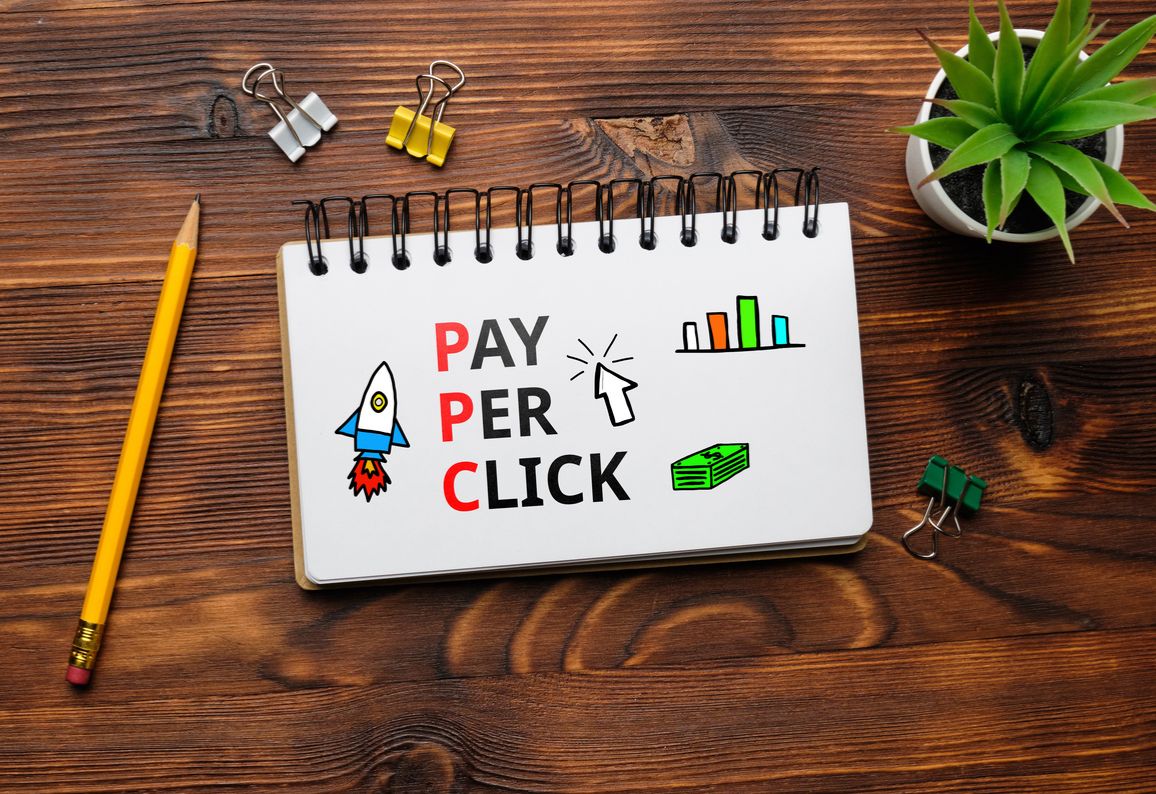Pay-Per-Click (PPC) advertising is a digital marketing model where advertisers pay a fee each time their ad is clicked. It’s a way to buy visits to your site rather than attempting to “earn” those visits organically.
How PPC Works
PPC ads function through a bidding system. When a user types a query, the platform processes all active ads in an auction. Factors like ad relevance, bid amount, and landing page quality determine the position of ads.
Core Concepts in PPC
1. Keywords: Specific words or phrases that trigger your ads.
2. Quality Score: A score based on ad relevance, expected CTR (Click-Through Rate), and landing page experience.
3. Bids: Maximum amount you're willing to pay for a click.
Benefits of PPC Advertising
PPC offers unique advantages, especially for businesses seeking quick, measurable results.
1. Fast Results: Unlike SEO, PPC can generate clicks immediately after the campaign is set up.
2. Targeted Audience: Use location, device, time, and demographics to reach the right people.
3. Budget Control: Set daily and monthly limits to manage ad spend effectively.
4. Measurable ROI: Monitor conversions, clicks, and other KPIs to understand campaign effectiveness.
Pro Tip: Integrate PPC with SEO for a comprehensive digital strategy, using PPC to target high-intent keywords for immediate visibility.
Setting Up a PPC Campaign: A Step-by-Step Guide
To create a successful PPC campaign, follow these essential steps:
Define Your Goals
Establish clear objectives like increasing website traffic, generating leads, or boosting sales. Goals should be SMART (Specific, Measurable, Achievable, Relevant, and Time-bound) to effectively track and evaluate success.
Keyword Research
Effective keyword research ensures you’re targeting the right audience. Here are some keyword strategies:
Short-Tail Keywords: Broad terms (e.g., "digital marketing").
Long-Tail Keywords: More specific phrases (e.g., "affordable digital marketing services").
Negative Keywords: Exclude certain words to prevent irrelevant clicks, saving ad budget.
Recommended Tools: Google Keyword Planner, SEMrush, and Ahrefs for researching keyword volume, competition, and cost-per-click (CPC).
Choose Your Ad Type
PPC platforms offer various ad types tailored to different objectives:
Search Ads: Appear on search engine results pages (SERPs) for keyword-based searches.
Display Ads: Visual ads displayed across websites in Google’s Display Network.
Shopping Ads: Product-based ads showing image, price, and description.
Video Ads: Shown on platforms like YouTube, ideal for engagement and awareness.
Craft Compelling Ad Copy
An attractive, concise ad copy is crucial. Include keywords and a clear call-to-action (CTA) to encourage clicks.
Example: “Find affordable digital marketing services that drive results! Get a free consultation today.”
Set Budget and Bids
Set a budget based on your campaign goals. You can use bidding strategies like:
Manual Bidding: Set your CPC manually.
Automated Bidding: Let the platform adjust bids to maximize results.
Optimize Landing Pages
Ensure the landing page matches the ad’s promise. A good landing page includes:
Clear headline
Relevant content
Strong CTA
Easy navigation
Strategies for a Successful PPC Campaign
To stay competitive, implement advanced strategies in your PPC campaigns:
1. Use Dynamic Keyword Insertion (DKI):
DKI automatically inserts the user’s search term into your ad copy, increasing relevance and CTR.
2. Leverage A/B Testing:
Test different elements of your ads (headlines, CTAs, images) to determine what works best.
3. Retargeting:
Re-engage users who have previously interacted with your brand but didn’t convert. Retargeting ads remind them of your offer, increasing the chances of conversion.
4. Optimize Ad Extensions:
Ad extensions provide additional information, such as phone numbers, location, and links to specific pages. They improve CTR and quality score.
5. Schedule Ads for Peak Times:
Set your ads to appear during times when your audience is most active, ensuring maximum exposure and higher conversion rates.
Best Practices for PPC Campaign Optimization
A successful PPC strategy involves continuous monitoring and adjustments. Here are some best practices to optimize your campaigns:
1. Monitor Quality Score:
Regularly check the Quality Score of your ads. Higher scores can reduce CPC and improve ad placement.
2. Analyze Competitors:
Use tools like SpyFu or AdBeat to understand competitor strategies, including keywords, ad copy, and landing page setups.
3. Track Conversion Rate:
Measure the percentage of clicks that result in conversions. If conversions are low, test different landing pages or ad variations.
4. Use Geo-Targeting:
Target users in specific locations to increase relevance, especially if you have a local business or specific service areas.
5. Implement Negative Keywords:
Regularly update your negative keyword list to prevent your ad from appearing in irrelevant searches.
Example: If you're promoting luxury products, add “cheap” as a negative keyword to avoid clicks from price-sensitive users.
Key PPC Metrics to Track
Monitoring and analyzing key PPC metrics ensures that your campaigns meet their goals. Here are the most important metrics to track:
1. Click-Through Rate (CTR): Percentage of users who clicked on your ad. A high CTR indicates effective ad copy and targeting.
2. Conversion Rate: Percentage of clicks that led to a completed action, like a purchase or sign-up.
3. Cost Per Conversion: The cost incurred for each conversion. Lowering this metric can improve ROI.
4. Return on Ad Spend (ROAS): Measures revenue generated for every dollar spent on ads.
5. Impression Share: Indicates how often your ad is shown relative to the total available impressions.
Tip: Use Google Analytics and conversion tracking tools to assess these metrics and refine your campaigns continuously.
Common Mistakes to Avoid in PPC Advertising
To maximize your PPC budget and results, avoid these common mistakes:
1. Ignoring Negative Keywords: Failing to exclude irrelevant keywords wastes budget and reduces ROI.
2. Not Testing Ad Variations: Without A/B testing, it’s difficult to know what works best for your audience.
3. Inconsistent Landing Pages: Ensure that your ad’s promise matches the landing page content.
4. Ignoring Mobile Optimization: Many users access ads on mobile, so ensure your ads and landing pages are mobile-friendly.
5. Setting and Forgetting Campaigns: PPC requires continuous monitoring and optimization for sustained results.
Future of PPC Advertising: Trends to Watch
As PPC continues to evolve, it’s essential to stay informed of trends to maintain a competitive edge.
1. AI and Automation: Tools like Google’s Smart Bidding use AI to optimize bids, making it easier to achieve better performance with less manual intervention.
2. Voice Search Ads: With the rise of smart devices, optimizing for voice search is becoming increasingly important in PPC.
3. Video Ads Expansion: Video content, especially on platforms like YouTube, is a powerful way to engage audiences.
4. Enhanced Targeting Options: Platforms are continually expanding targeting features, allowing advertisers to reach more specific audience segments.
Conclusion
Pay-Per-Click advertising is a highly effective marketing strategy when executed correctly. By understanding its fundamentals, setting clear goals, and continuously optimizing your campaigns, you can maximize your ROI and achieve significant business growth. Remember to focus on your target audience, track key metrics, and adapt to the latest PPC trends to stay ahead in this competitive landscape.







